Ethiopian Coffee | characteristics of Nine boutique producing areas and Coffee Trading system
For more professional coffee exchanges, please scan the code and follow Wechat: FrontStreetCoffee

Ethiopia
Name: Ethiopia
Location: East Africa
Capital: Adis Abba Addis Ababa
Religion: dominated by Christianity
Language: Amharic
Time zone: GMT+3
Measurement: metric (Metric)
Currency: bill Birr (1 $≈ 20 birr)
Agricultural products (export): coffee, flowers and sesame are the main cash crops
Port: Port of Djibouti (Djibouti, now the main export port)
Average annual temperature: 15-20c in highland and 25-30c in lowland
Average annual rainfall: 1000-2000 mm
Soil: 50% volcanic soil (volcanic)-25% sedimentary soil (sedimentary)-25% other
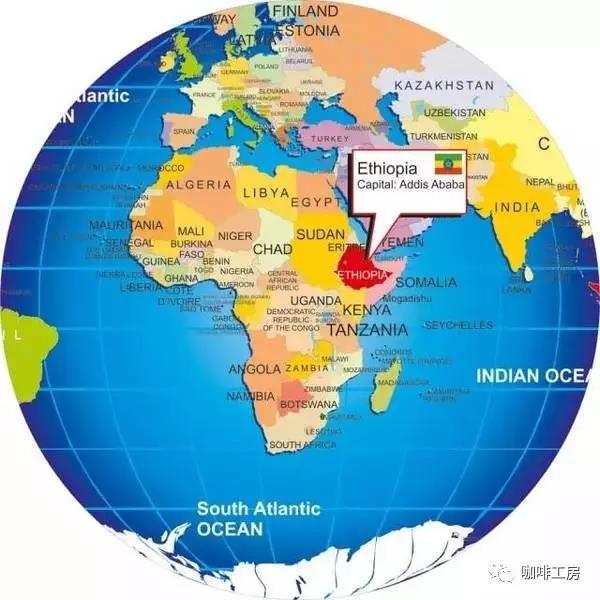
Tuesse Geographic location Source James Elford's Blog
Ethiopia, which is located in a country full of wonders, is the source of all the Arabica coffee we have never drunk.
The recorded historical evidence of coffee in Ethiopia can be traced back to the 4th-5th century AD, when coffee spread to Yemen in the Arabian Peninsula as people fought and migrated because of the inter-ethnic war. later, with the rise of the Ottoman Empire and the spread of Islam, Europe began to have cafes and the gradual formation of coffee shop culture, and then Central America began to grow coffee. India and Indonesia in Asia began to grow coffee commercially on a large scale. It took us hundreds of years to reach the third wave of boutique coffee.
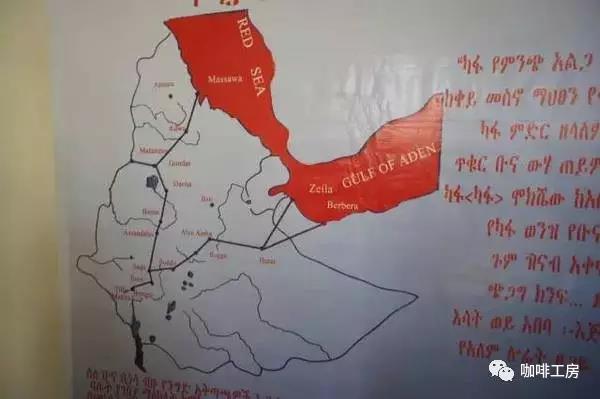
The origin and spread of Ethiopian coffee originated from Makira virgin forest
Administrative divisions of Ethiopia
Ethiopia is a federal republic and since 1995 administrative regions have been divided into a new system.
9 autonomous regions
● 2 municipalities
The Autonomous Region is further divided into Zone areas, Woreda County and Kebele Township.
Note: Most of our common coffee names are Woreda County or Kebele Township Level 1.
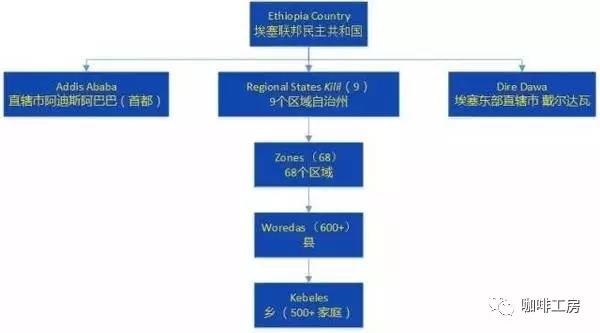
The climate of Ethiopia
Ethiopia's climate is polarized, half of the humid rainforest and half of the Gobi desert.
This is also the reason why coffee cultivation is mainly distributed in the southern tribal states SNNPR and Oromia, Oromia.
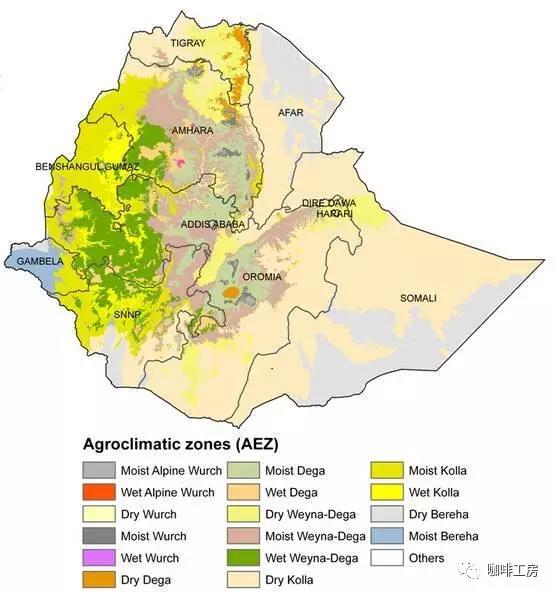
Tuesse climate distribution
Worldclim, the source of annual precipitation
The main rainfall season in Ethiopia is 6, 7, 7 and 8 months, and the annual precipitation in the main growing areas of coffee is 1000-2000 mm.
Chart average annual temperature source worldclim
Ethiopia has the coldest weather in December and January, and the hottest in April and May.
The average annual temperature in the main growing areas of coffee is between 15 and 30.
Coffee cultivation in Ethiopia
Since Ethiopia changed the administrative division around 1995, the greatest impact on the coffee area is that the original Sidamo Sidamo province is divided into the new Sidamo Sidama (the original minority), and most of it is classified into the Oromia Oromia state. And Yega Xuefei, which used to belong to Sidamo Province, is now classified as the new Gedeo of Gaidio District. Now there will be a mixture of Ethiopian coffee products in circulation in the market with the names of new and old regions. Here we take the new regional division as the benchmark, combined with the administrative region to understand Ethiopia's coffee growing map.
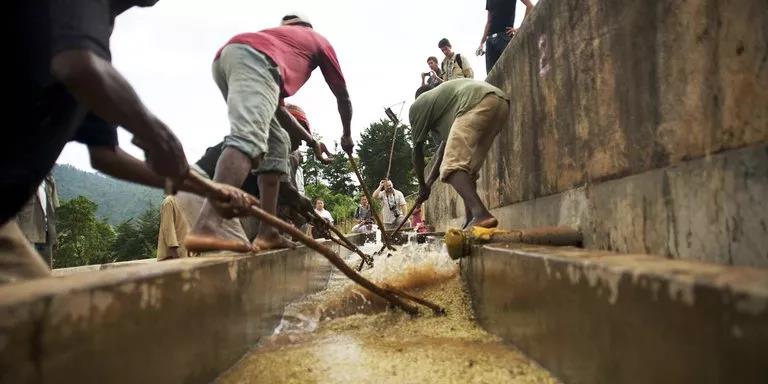
Yejia Xuefei (boutique producing area): 1800m-2000m above sea level | Pastoral coffee system |
Yega Xuefei is affiliated to the Sidamo producing area, which is separated separately because of its unique flavor. In addition to the small town of Yega Xuefei, it also includes three by-product areas around Wenago, Kochere, Gelena and Abaya. Therefore, Yirgacheffe A, Wenago A, Kochere An and Gelena/AbayaA will be more expensive than B of the same name in the new Yega Sheffield rating system. Yega Xuefei | five reasons to drink Yega Xuefei
Sidamo (boutique producing area): 1400-2200m above sea level | Pastoral coffee system |
The flavor is similar to Yejiaxuefei, Sidamo, which is delicately washed or sunburned, has the same fragrance of flowers and oranges, and is worth as much as Yega Xuefei. The varieties in the two producing areas are similar, with medium-sized beans but also small seeds of dwarf plants, which farmers often sell separately. Common Kurmie, poor disease resistance; Wolisho; tall and strong; Deiga, medium tree shape, these three species are the main force of the boutique tanning series Beloya and Aretha.
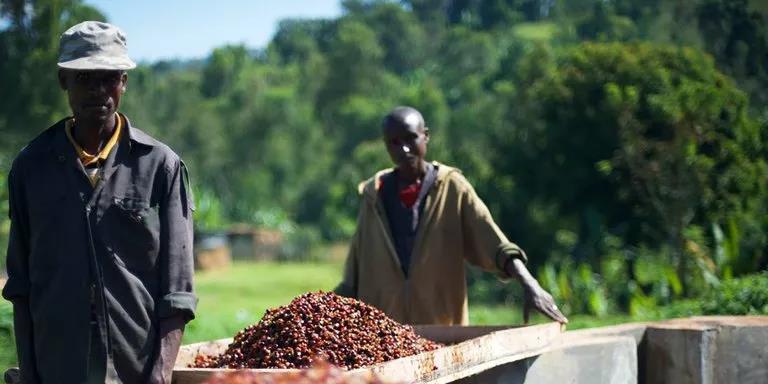
Liam (boutique producing area): 1200m to 2000m above sea level | Coffee system in pastoral, forest, semi-forest and planting fields |
The output is relatively small, and it is mainly exported to Europe and the United States, but it is not easy to buy in Taiwan, but it is very popular in Europe and the United States. there are three treatment methods: washing, tanning and semi-washing. Liam's body will be significantly less viscous, and the floral and citrus flavors will be inferior to those of Yegashifi and Sidamo, but with a hint of grass and black sugar, and bright acidity.
Hara (boutique producing area): 1500-2400 m above sea level | Pastoral coffee system |
Hara exclusive sun, is an ancient city in the east, but the city does not grow coffee, the so-called Hara coffee refers to the coffee produced by Haraji high and low in the Great Hara area. As the annual rainfall is only 1000 mm, all of them are treated in the sun. Hala caffeine is famous for its special aroma, which is typical of the early morning flavor in ancient times. she is tied with Yegashifi [double star].
If Hara's defective beans can be picked out, it is easy to drink berry aromas with slightly pleasant fermented aromas. However, due to various factors, the quality of Hara coffee is unstable in recent years, and the grading system is not true, so you must test or try it when you buy it.
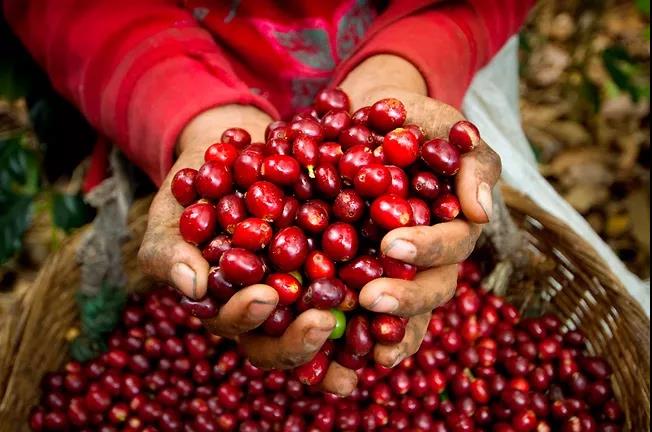
Jinma (bulk commercial bean producing area): 1350-1850 m above sea level | Forest / semi-forest system |
Jinma is the capital of Kafa Forest or Kafa province. The English spelling is very messy. Most of the maps are jimma, but the coffee sacks are spelled into Djimmah. This is the largest coffee producing area in Ethiopia, accounting for 1 per cent of exports.
Kafa Forest is famous for its primitive wild varieties. Jinma is the distribution center of Kafa in this area. Farmers are used to picking and transporting the forest to Jinma, and then mixing hundreds of varieties together to sell as commercial beans, resulting in the aroma of many delicious varieties being masked.
Water washing boutique Jinma, although there is no Yega Xuefei orange fragrance and flower rhyme, the taste spectrum is also quite clean, similar to the Central American boutique. Commercial-grade boutique Jinma is very common in Taiwan, and luckily you can buy high-quality and inexpensive Jinma, which can drink the fragrance of lemon peel, which is not inferior to that of Sidamo. Overall, Jinma has a better flavor than Brazil's bulk commercial bean Santos, making it a good medium-to-low-priced formula bean.
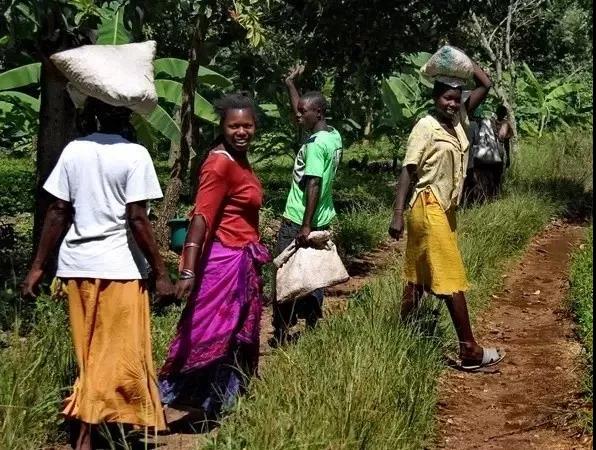
Yilu Babo (bulk commercial bean producing area): altitude 1350-1850 | Forest / semi-forest coffee system |
This area is located in the west of Ethiopia, bordering Sudan, and is the most convenient producing area in the west. the complexity of coffee gene is only second to that of Kafa forest, beans are obviously larger than those of Yegashifi and Sidamo, low acidity, good viscosity and balanced flavor. Most of the coffee here is transported to Jinma to be mixed, rarely sold independently.
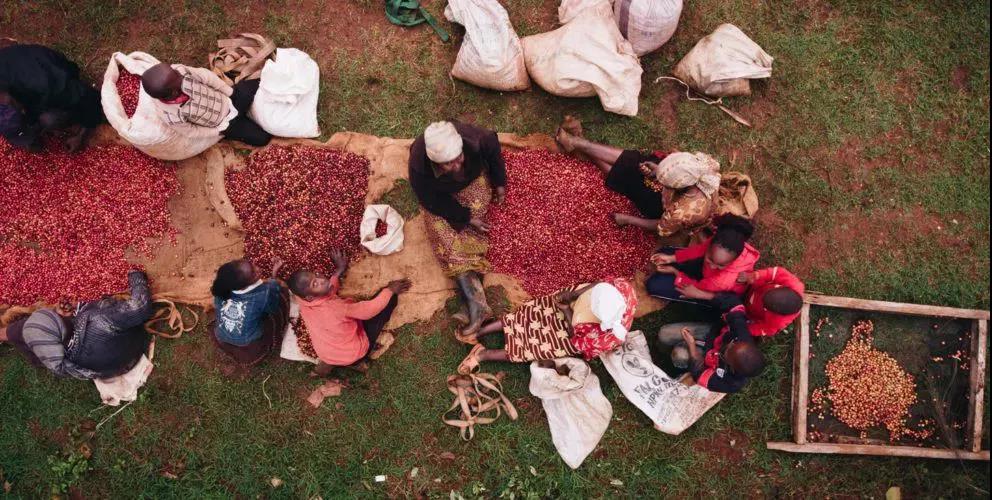
Jinbi, Liechuti (major commercial bean producing areas): 1500-1800 above sea level | Forest / semi-forest coffee system |
There are sun-washed and water-washed beans in this area, long-bodied beans similar to Hara, and a few boutique grades are quite popular in Europe and the United States. Most of the Hara, known as the poor, has a sour and fruity flavor due to Yilu Babo, with a bright flavor.
Tiebi, Bebeca (bulk commercial bean producing area): 500-1900m above sea level | Pastoral / forest / semi-forest coffee system |
The two producing areas are very close. Tiebi has an enterprise-managed coffee plantation in the north of Bebeca. In recent years, it has promoted the pastoral system and increased farmers' income, with an annual output of about 3000 tons. Both places have wild coffee, the yield is not high, the flavor is very different from Hara and Yega snow coffee, low acidity is the biggest feature, suitable for formula beans, sun and water washing.
Tana Lake (alternative production areas): 1840 meters above sea level | Forest system |
Monastery coffee, the annual output of the surrounding forest coffee is very small, less than 10 tons, in fact, can not be called the producing area, the lake area is full of Orthodox monasteries, churches, religious murals and myths, creating the most "divine" coffee in the world.
European monastic academics opened up a local coffee growing industry, which was later run by coffee communities or cooperatives in villages around the town. There are no special plantations here, and coffee trees are naturally scattered in the forest and countryside. During the harvest season, the Ethiopian Coffee Trading Company goes to town to buy coffee beans collected by farmers.
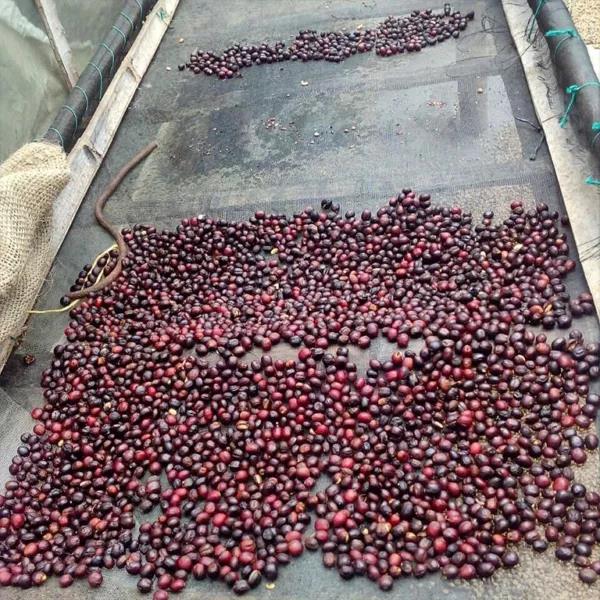
Ethiopia's coffee cultivation is mainly in the western and southern region, and small farmers account for 90% of the total. Nearly 1.2 million of small farmers make a living by growing coffee, with an average planting area of less than 4 hectares, an average altitude of 1000-2300 meters, a planting density of 1000-1800 coffee trees per hectare, and a yield of nearly 600kg per hectare.
Ethiopia's coffee cultivation is divided into:
● forest coffee forestcoffee (8-10%), coffee trees and other crops coexist in the primeval forest, without any artificial care, farmers will pick coffee fruits regularly.
● forest-semi-forest coffee semi-forestcoffee (30-35%), the coffee planting area is between the forest and the range of farmers' lives, coffee trees are naturally produced varieties like forestcoffee, and farmers will manage coffee planting areas and grow other cash crops.
● pastoral coffee gardencoffee (50-55%), coffee trees are planted around farmers' living areas, and most of them are grown by farmers themselves.
● plantation coffee plantationcoffee (5-6%), a large private grower, has more treatment facilities and production capacity.
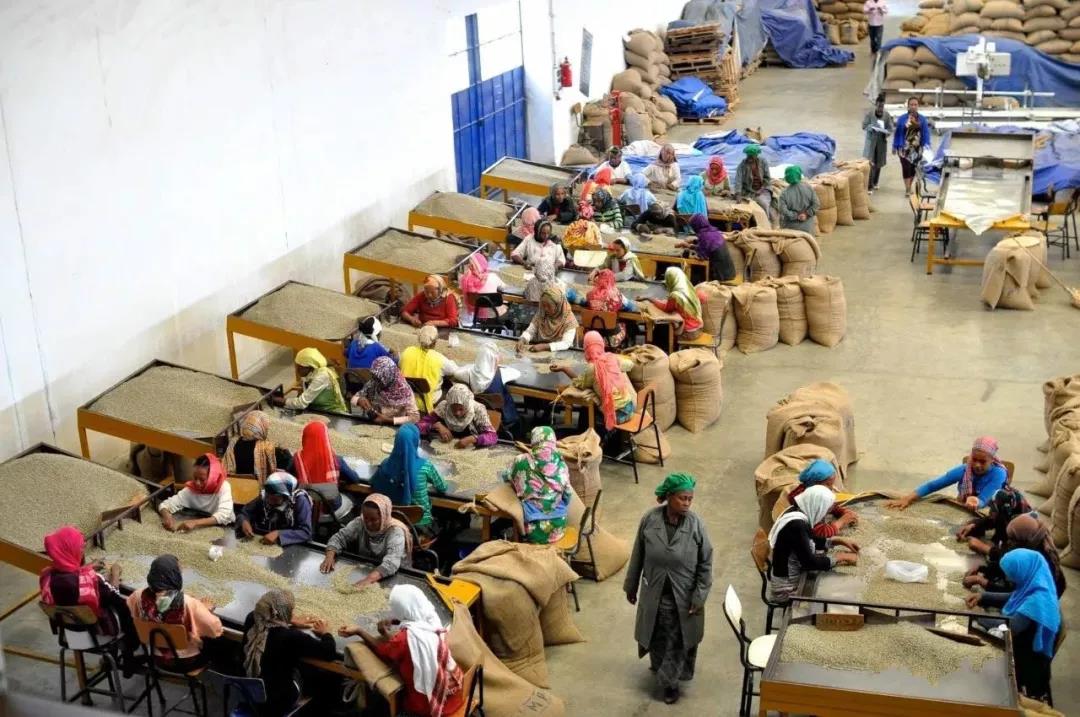
Most of the coffee cultivation in Sidamo and Yega Xuefei belongs to the pastoral coffee model, in which coffee farmers plant coffee trees near their living areas and harvest them during the harvest season. it is then sent to a nearby treatment plant built on water for unified treatment (or purchased by a middleman). In addition to a small number of plantations that have the strength to grow, pick and handle raw coffee beans independently, many coffee beans from different regions and varieties will be centrally processed by the processing plant and then sent to the auction house for official evaluation and grading.
This is one of the reasons why many Ethiopian coffee beans are named after processing plants or cooperatives, and it is also one of the reasons why the same batch of coffee beans are mixed with multiple coffee varieties. even the flavor of different batches of coffee beans produced by the same treatment plant will be significantly different.
The Ethiopian Department of Agriculture has a department called Cupping and Liquoring Unit CLU, which is responsible for the quality approval of exported coffee, which includes the very important responsibility of grade definition; CLU existed before ECX.
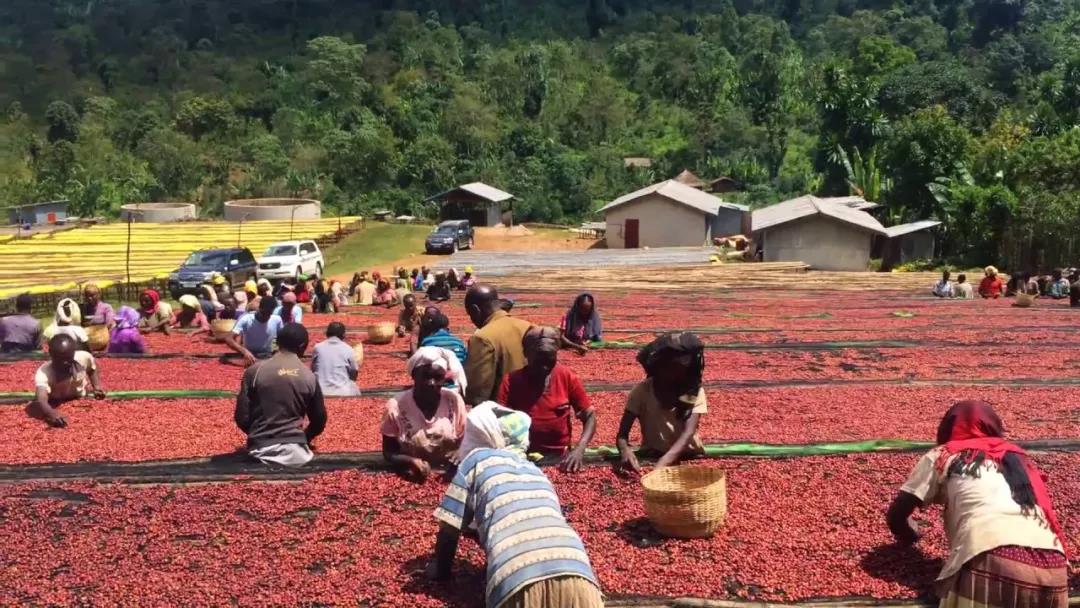
Before the advent of ECX, for washed coffee, the export grade was G1 and G2; for sun-cured coffee, the export level was G3, G4, G4, G5, which means that the highest level of sun exposure was G3.
After the emergence of ECX, there is a redefinition of classification, and there is no difference in the classification name of washing, while the definition of sunlight appears for the first time G1, which is why Esser's sunburn is G1 and G2, while G3 begins to decrease slowly.
Coffee variety
If you are very fond of African beans, it should be easy to find that Ethiopian beans are generally of different sizes and have significantly lower evenness than those in Kenya. Whether it is Yega Xuefei or Sidamo, whether it is washing or sunlight, sometimes the same batch of coffee beans can be seen to be significantly different in baking color and particle size.
Why are Ethiopian coffee beans always big and small? ]
Regular Ethiopian coffee drinkers should have heard of the [Heirloom native species], most Ethiopian varieties will be named after this name, in fact, because there are so many Ethiopian varieties, it is like the natural gene bank of Arabica, on the one hand, there are many varieties, and it is difficult to identify and classify them, on the other hand, the Ethiopian government is reluctant to disclose these species information for the sake of protection, so it is collectively called [Heirloom native species].
Nearly 2000 coffee varieties have been recorded in Ethiopia (including 1927 native varieties and 128 imported varieties-Note 2).
Depending on the appearance, Esther's coffee variety is "Grand View Garden", which has everything, long, short, thin and fat.
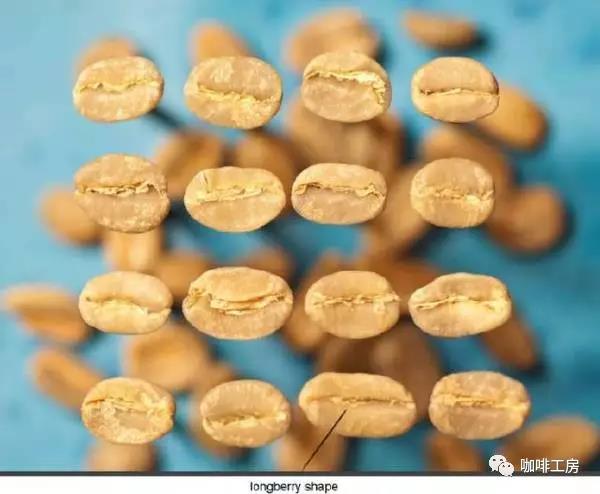
Does the original seed growth source Willem J. Boot of Ethiopia look like gesha?
Long particles are found in all coffee growing areas in Ethiopia. From the actual proportion seen, there are more long particles in the western Jimma, including Limmu and Kaffa, and less in sidama or yirgacheffe.
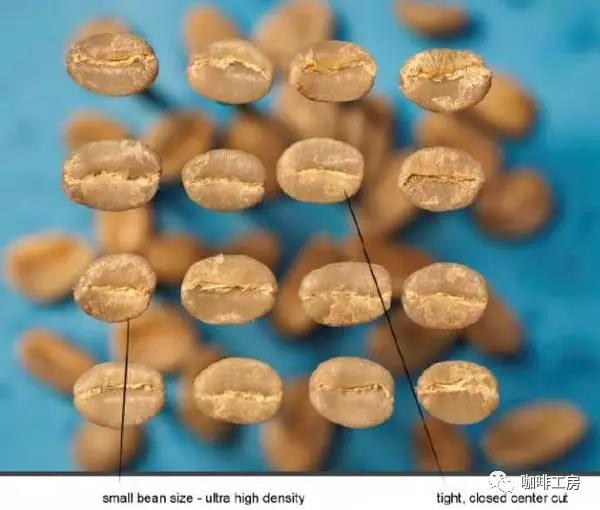
Small granule species, the appearance is relatively round, the bean body is very small, mostly between 14-15 orders, this variety should be the most familiar to us. They can often be seen in sidama and yirgacheffe. I have also seen them in a harrar sample, and also in coffee beans sold locally by Jimma. Compared with other regions, sidama, yigracheffe and surrounding arsi, guji have more native varieties of these small grains.
Flavor characteristics
Long granule species-planting areas include mainly Harrar, Jimma, Kaffa, very few in Sidama, Yirgacheffe, Guji, Arsi and other regions, with less fruity flavor, softer fruit acid, and more caramel, nuts and cream.
Small granule species-the planting areas are mainly Sidama, Yirgacheffe, Amaro under SNNPR and Guji and Arsi bordering Oromia. The flavor shows strong fruit tonality, depending on different treatment methods.
We often hear about the "Red Cherry Project". As the birthplace of coffee beans, Ethiopia has a very low development rate of local tree species, so we usually call Ethiopian tree species native species. because we have no idea which coffee trees are made up of this land.
What is the Red Cherry Project?
The "Red Cherry Project" (ORC) is a project to improve the quality of small-scale farms. In 2007, Trabocca, the largest raw bean manufacturer in the Netherlands, proposed the "Red Cherry Project" in pursuit of high-quality Essex beans. The plan requires that raw coffee beans should be picked not only by red fruit, but also by hand, but this is only the most basic requirement, and the plan is far from simple. The main purpose is to encourage soybean farmers and surprise roasters. Trabocca, the largest coffee bean manufacturer in the Netherlands, invited all Ethiopian farms to produce small batches of beans of about 1500 to 3000 kilograms (25,50 bags) before the harvest season. Women can only choose fully 100% ripe red cherries, which differ greatly in the flavor of the brewed coffee. So attentive and industrious Ethiopian women are important drivers of the Red Cherry Project.
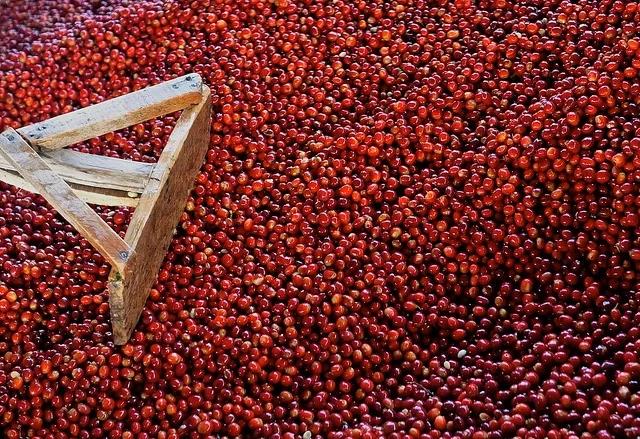
The red cherry program is also a reinforcing method, which makes the farm pay more attention to the process of selecting beans, and the prices of these coffees are relatively high. Red cherries have water washing, sun-drying beans, half-washing, half-sun, experimental coffee and so on. The main producing areas are Yega Sheffield, Sidamo, Punga Forest, Lekanti, Ken Bata, Iruba, Hara, Lim, etc., and joined Coroja Golocha in 2011 (near Harald). These are all unique flavors and can fully show the flavor of Ethiopian coffee. Trabocca will choose from it when he receives the coffee. Farms that pass the cup test quality test in Ethiopia and the Netherlands will pay high bonuses. Trabocca, the promoter of the Red Cherry program, invests all the profits made in recent years in the cooperative farm. Trabocca stressed that this is an unprofitable plan, so the company only uses four people, including the boss and secretary, to implement the red cherry project, and other administrative related matters support the parent company to reduce administrative expenses. All the profits go back to the cooperative farm.
The largest coffee and bean seller in the Netherlands, the company has a deep relationship with Ethiopia. Its founder, Menno Simons, knew little about coffee until he was surprised by the unique taste of native beans on a trip to Ethiopia. At the same time, it is also engaged in the trade of other primary agricultural products, including cocoa and all kinds of fresh fruits, and is committed to finding all kinds of high-quality raw materials, paying attention to environmental protection and paying attention to the lives of farmers.
The company's vision is "Discover,Develop,Deliver". Since the founding of the company, Menno Simons has visited coffee bean producing areas, estates and processing plants across Ethiopia to discover coffee bean varieties with charming flavors. So the "Red Cherry Project" came into being.
According to the Ethiopian decree, there are three coffee export systems: (1) the largest private processing plant system that has been exported through ECX bidding; (2) the cooperative system; and (3) the single farm system. In these three systems, cooperatives and single estates can be exported directly without competitive bidding through ECX, which can be said to have completely reliable traceability / product curriculum vitae (traceability).
However, if we get to the bottom of the matter, the cooperative is, after all, a centralized treatment of cherries harvested by small farmers, not 100% traceable. After all, a single farm is the only possibility of moving forward to the next generation.
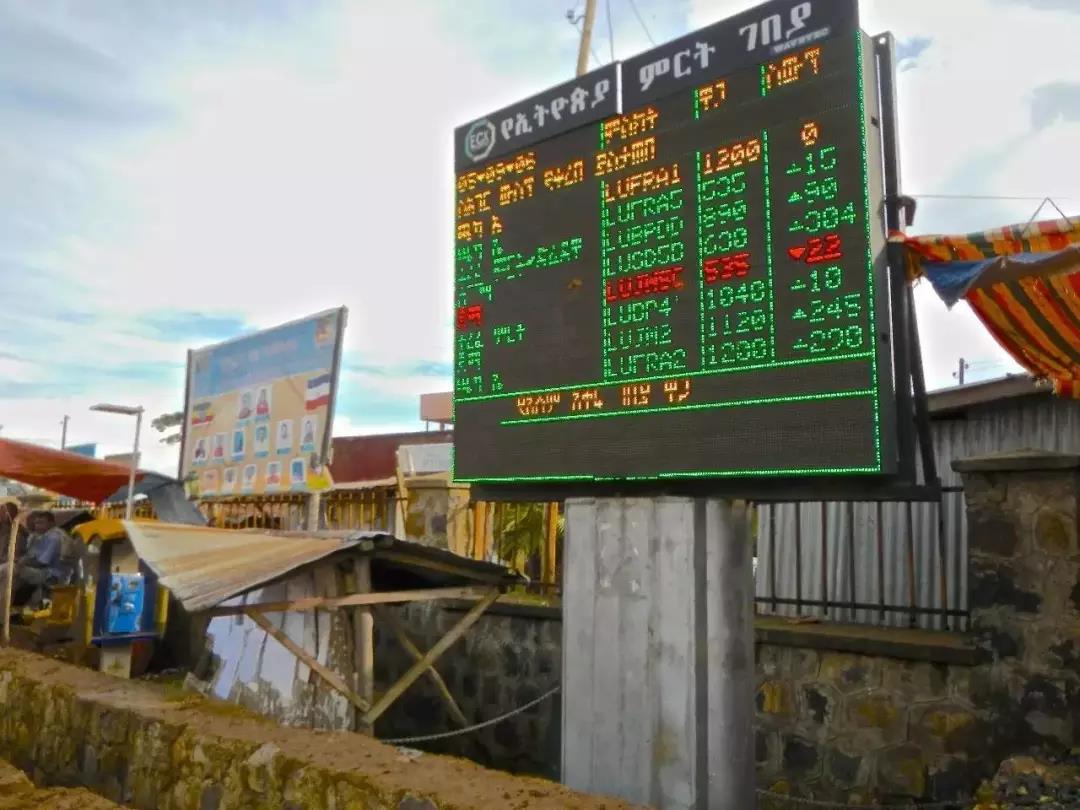
Ethiopia Commodity Exchange
The Ethiopia Commodity Exchange (ECX) was founded in 2008 by Eleni Gabre-Madhin, a former World Bank senior economist and director of the International Food Policy Research Institute (IFPRI). The original intention of ECX was to establish the first commodity exchange in Ethiopia and even Africa. By introducing modern trading rules and technologies such as pricing mechanism, warehousing logistics and instant communication means, ECX changed the situation of high transaction risk and high transaction cost in Ethiopian agricultural products market and built an effective, reliable and transparent commodity market.
ECX was widely acclaimed at its inception as transforming Ethiopian agriculture and reducing famine and poverty. In the past, Ethiopian farmers have often been accused of providing market access to more than 2.4 million smallholder farmers through rural cooperatives, as claimed by ECX in overwhelming media coverage.
ECX's coffee trading model goes something like this: First, farmers sell coffee berries to local washing plants, some of which pay higher prices for better quality coffee berries. The processing yard will deliver the processed raw beans to the warehouse of the delivery station.
ECX is equivalent to a "distribution center", which does the following:
1. With better price protection, it buys coffee beans from coffee farmers at a constant and better price and stores them.
2. Coffee classification, the best price is higher;
3. Information timely, coffee farmers can call, immediately get the transaction price, the regional processing station, the regional coffee warehouse and other information;
4. Establishment of storage & processing plants, as of 2012, Ethiopia has 56 warehouses distributed in 17 locations, 9 of which have coffee warehouses, reducing transportation costs.
For example, in the Yerca Sherphine region, the delivery point is Dila, and the raw beans are labeled according to the production area and graded according to the quality and quality of the raw beans. The higher the overall quality, the higher the selling price. Traders buy raw beans through ECX, but the packaging only indicates the origin and village, such as "Yirgacheffe: Konga"(Yirgacheffe: Konga). Yirgacheffe: Kochere
Ethiopia
Name and description of coffee cooperatives
Farmers 'Cooperative Union
In order to facilitate the direct export of farmers 'cooperatives to the outside world, farmers' cooperatives in various places have set up their own cooperative unions. At present, there are 6 farmers 'Cooperative unions in Ethiopia, namely
● Oromia Coffee Farmers Cooperative Union (OCFCU)
● Sidama Coffee Farmers Cooperative Union (SCFCU)
● Yirgacheffe Coffee Farmers Cooperative Union (YCFCU)
● Kafa Forest Coffee Farmers Cooperative Union (KFCFCU)
● Bench Maji Coffee Farmers Cooperative Union (BMCFCU)
● Tepi Coffee Farmers Cooperative Union (TCFCU)
The advantage of cooperative alliance is to unite scattered small farmers and cooperatives to form a large collective, participate in international projects, such as Firetrade, provide a unified export to contact buyers, pay a certain proportion of the harvest to cooperatives, deduct management expenses, reserve part for community development, and pay the rest to small farmers. Small farmers can obtain income more stably and conveniently to meet planting and living expenses. This is why more and more smallholders are willing to join cooperatives.
Sisiga Cooperative (1600-2500 m)
Region: Gedeo-Kochere Kochere
Number of members: 1862
Land Attribute: Red Brown Soil
Certificates: Fair Trade, UTZ Sustainable Grown, Organic Coffee
Finchewan Cooperative (1450- 2000m)
Origin: Gedeo-Wenago
Number of members: 1,271
Land attribute: Red Brown Soil
Certificate: Fair Trade, Organic Coffee
Konga Konga Cooperative (1750- 2300m)
Production area: Gedeo-Yejia Shefei
Number of members: 1,556
Land attribute: Red Brown Soil
Certificate: Fair Trade, Organic Coffee
Hafursa Cooperative (1750-2300 m)
Production area: Gedeo-Yejia Shefei
Number of members: 1975
Land attribute: Red Brown Soil
Annual production of green coffee beans: 798000 kg
Average farm size: maximum 4 hectares, annual yield of approximately 600 kg per hectare
Cooperative has washing station
Certificate: Fair Trade, Organic Coffee
Resa Cooperative (1000-1400 m)
Origin: Gedeo-Wenago
Number of Members: 2,719
Land Attribute: Red Brown Soil
Two sets of coffee processing equipment available
Certificate: Fair Trade, Organic Coffee
Addis Katema Cooperative (1000-1400 m)
Origin: Gedeo-Wenago
Number of members: 891
Cooperative has washing station
Land attribute: Red Brown Soil
Certificate: Fair Trade, Organic Coffee
Biloya Cooperative (1600-2500 m)
Region: Gedeo-Kochere Kochere
Number of members: 1,203
Land attribute: Red Brown Soil
Two sets of coffee processing equipment
Certificate: Fair Trade, Organic Coffee
Worka Woka Cooperative (1650-2700 m)
Production area: Gedeb
Number of members: 305
Land attribute: Red Brown Soil
Annual production of green coffee beans: 457000 kg
Average farm size: maximum 4 hectares, annual yield of approximately 699 kg per hectare
Cooperatives have all the treatment equipment
Certificate: Fair Trade, Organic Coffee
Koke Co-op (1750-2300 m)
Production area: Gedeo-Yejia Shefei
Number of members: 828
Land Attribute: Red Brown Soil
One set of treatment devices available
Certificates: Fair Trade, UTZ Sustainable Grown, Organic Coffee
Hama Cooperative (1600-2500 m)
Region: Gedeo-Kochere Kochere
Number of members: 1,505
Land attribute: Red Brown Soil
One set of treatment devices available
Certificate: Fair Trade, Organic Coffee
Chichu Cooperative (1410- 2000m)
Production area: Gedeo-Dila
Number of members: 1,675
Land Attribute: Red Brown Soil
Average farm size: maximum 4 hectares, annual yield of approximately 591 kg per hectare
One set of treatment devices available
Certificate: Fair Trade, Organic Coffee
Michile Cooperative (1410-2000 m)
Production area: Gedeo-Dila
Number of members: 1,206
Land Attribute: Red Brown Soil
Average farm size: Annual yield of approximately 592 kg/ha
One set of treatment devices available
Certificates: Fair Trade, UTZ Sustainable Grown, Organic Coffee
Hase Haro Cooperative (1450- 2000m)
Origin: Gedeo-Wenago
Number of members: 1,519
Land attribute: Red Brown Soil
Average farm size: maximum 4 hectares, annual yield of approximately 591 kg per hectare
One set of treatment devices available
Certificate: Fair Trade, Organic Coffee
Dumerso Cooperative (1750-2300 m)
Production area: Gedeo-Yejia Shefei
Number of members: 246
Land attribute: Red Brown Soil
Two sets of treatment devices available
Certificate: Fair Trade, Organic Coffee
Tumticha Cooperative (1410- 2000m)
Production area: Gedeo-Yejia Shefei
Number of members: 960
Land attribute: Red Brown Soil
Two sets of treatment devices available
Certificate: Fair Trade, Organic Coffee
Aramo Cooperative (1750-2300 m)(90+ Clinique)
Production area: Gedeo-Yejia Shefei
Number of members: 2,254
Land attribute: Red Brown Soil
Two sets of treatment devices available
Certificate: Fair Trade, Organic Coffee
Edido Cooperative (1750- 2300m)
Production area: Gedeo-Yejia Shefei
Number of members: 1044
Land attribute: Red Brown Soil
One set of treatment devices available
Certificate: Fair Trade, Organic Coffee
Adame Cooperative (1000-1400 m)
Origin: Gedeo-Wenago
Number of members: 533
Land attribute: Red Brown Soil
One set of treatment devices available
Certificate: Fair Trade, Organic Coffee
Belekara Cooperative (1000-1400 m)
Origin: Gedeo-Wenago
Number of members: 685
Land Attribute: Red Brown Soil
One set of treatment devices available
Certificate: Fair Trade, Organic Coffee
Adado Cooperative (1200-1700 m)
Production area: Sidamo-Bule
Number of members: 1,128
Land Attribute: Red Brown Soil
One set of treatment devices available
Certificate: Fair Trade, Organic Coffee
Haru Cooperative (1200-1700 m)
Production area: Gedeo-Yejia Shefei
Number of members: 1,187
Land Attribute: Red Brown Soil
One set of treatment devices available
Certificate: Fair Trade, Organic Coffee
In July 2017, two new coffee trade regulations could change this by giving coffee farmers the option to sell coffee beans to coffee processing plants within three days of their arrival at ECX warehouses.
barista
single farm
The system has always existed in Ethiopia, but the proportion has not been high, and it has traditionally been a large commercial batch with no emphasis on quality. With Ethiopia emerging in the third wave of fine coffee in the past 20 or 30 years, in addition to traditional coffee practitioners, Ethiopia has gradually emerged a group of new talents influenced by Western culture, hoping to bring changes to this industry. In addition to traditional exporters, they have also attracted a group of people from Europe and America to return to their hometown.
How important is the Single Farm Project (SFP)? We all know that Ethiopia is dominated by smallholder systems, but it is impossible to achieve complete traceability in smallholder systems.
Single farms are the only answer to all these questions. Single variety batches, special treatment batches, customized batches, etc. Fine coffee development is a very important implementation concept,
For example, this bean belongs to a single farm, the micro-production area Hambella Hambella Manor. How to understand the name of coffee such as "Ethiopian Sunburn G1 West Dharma Hamberra Flower 2.0"?
Important Notice :
前街咖啡 FrontStreet Coffee has moved to new addredd:
FrontStreet Coffee Address: 315,Donghua East Road,GuangZhou
Tel:020 38364473
- Prev
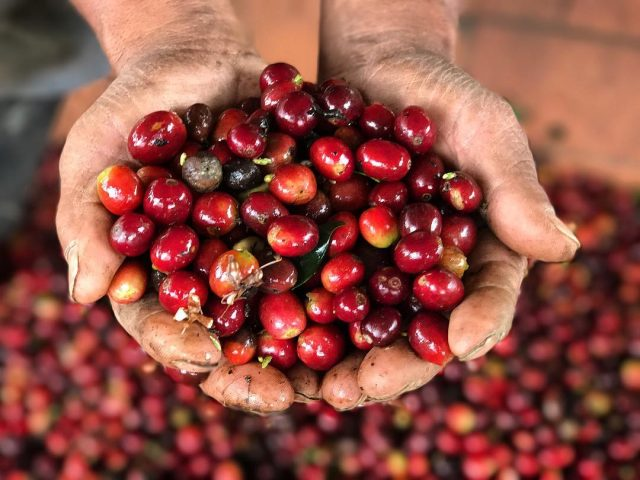
Burundian Coffee | list of farms winning the COE Excellence Cup in Burundi in 2018
Professional coffee knowledge exchange more coffee bean information please follow the coffee workshop (Wechat official account cafe_style) Burundi 2018 COE excellent Cup award-winning farm COE excellent Cup: in each cup test by the National jury and the International jury of the excellent Cup, the winning coffee scored more than 86 points. During the cup test, the coffee was tested at least five times at a time. Batch representation 3
- Next
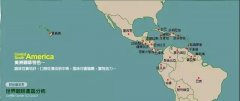
Flavor of American coffee beans | Coffee characteristics of American coffee producing areas | Bolivian coffee
Professional coffee knowledge exchange more coffee bean information Please follow the coffee workshop (Wechat official account cafe_style) many people say that they smell coffee, but are afraid of the bitterness of drinking coffee ~ in fact, through simple understanding and training, everyone can drink the flavor of coffee. Today, the editor begins to introduce the American coffee beans, which are famous for their sense of balance.
Related
- What is the standard process for the purpose of coffee cup testing? What is the difference between hand-brewed coffee and cup testing?
- How to use hand-brewed coffee paragon small golden balls? How does cold coffee lock in the aroma of coffee?
- Is American coffee black? What is the difference between American coffee and drip coffee?
- Unexpected! Well-known tea beverage brand Lele Tea will withdraw from the Zhengzhou market!
- Starbucks enters the fashion and beauty industry?! Netizen: Give me an ice American eye cream
- Why can American refills for free? The difference between Americano and American drip pot coffee
- Being chased out of the rain in front of Starbucks?! Store: Sheltering from rain under umbrellas poses a safety hazard
- The white moonlight has changed?! Lucky launches "Big Winter Pear American"
- Hand-brewed coffee three-stage method, high-sweet and universal brewing method to share! What does the high sweet water level of hand-brewed coffee mean?
- What is the difference between raw, refined and full espresso coffee? How to extract espresso and taste good?

